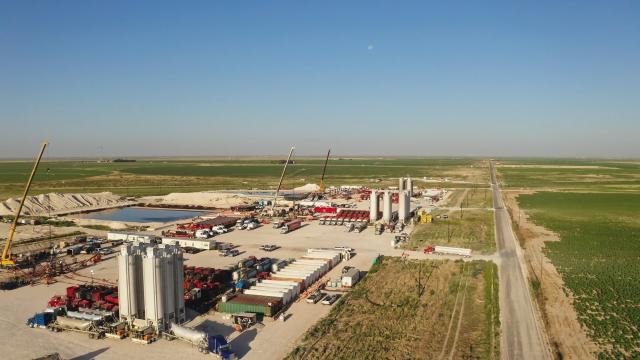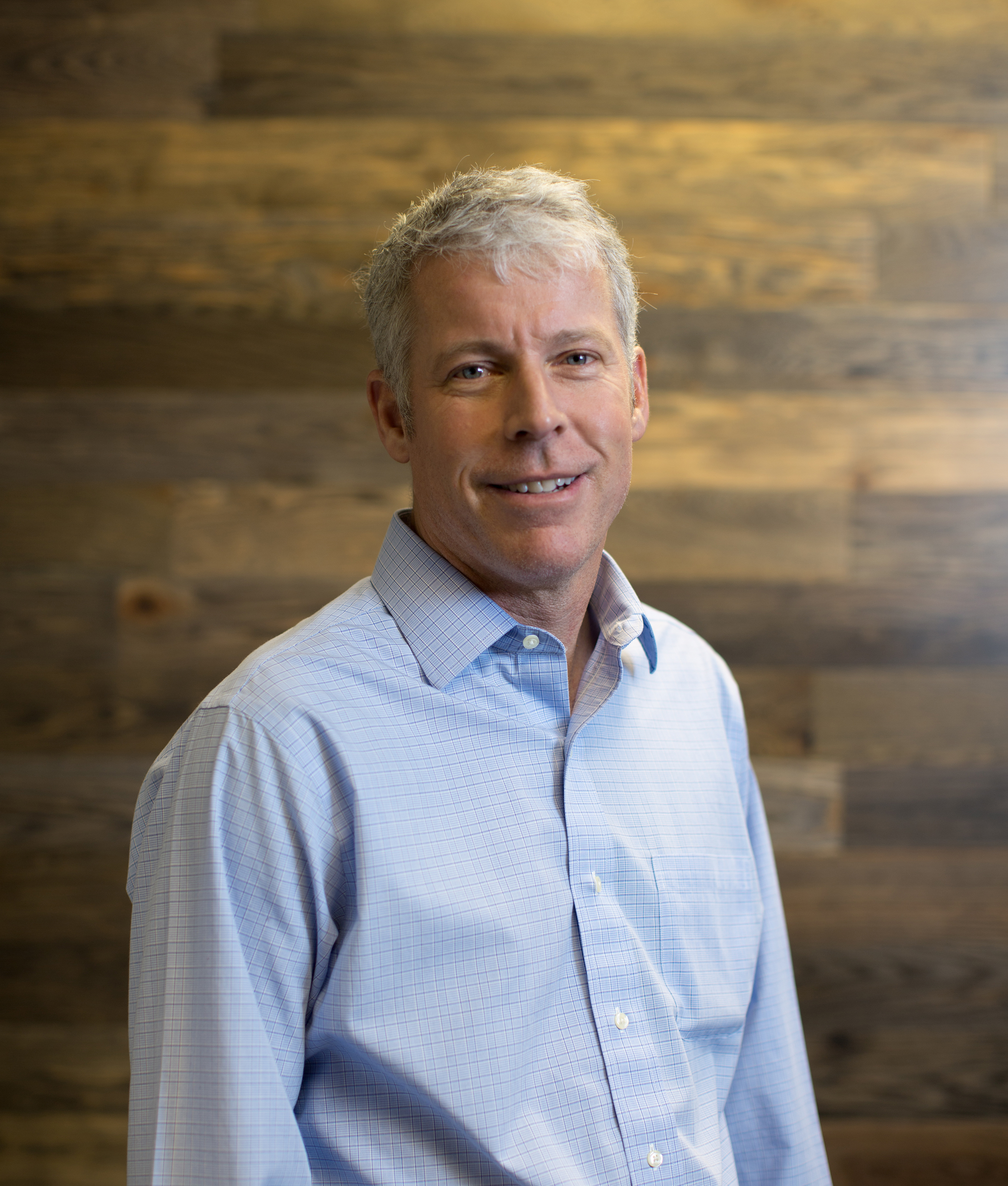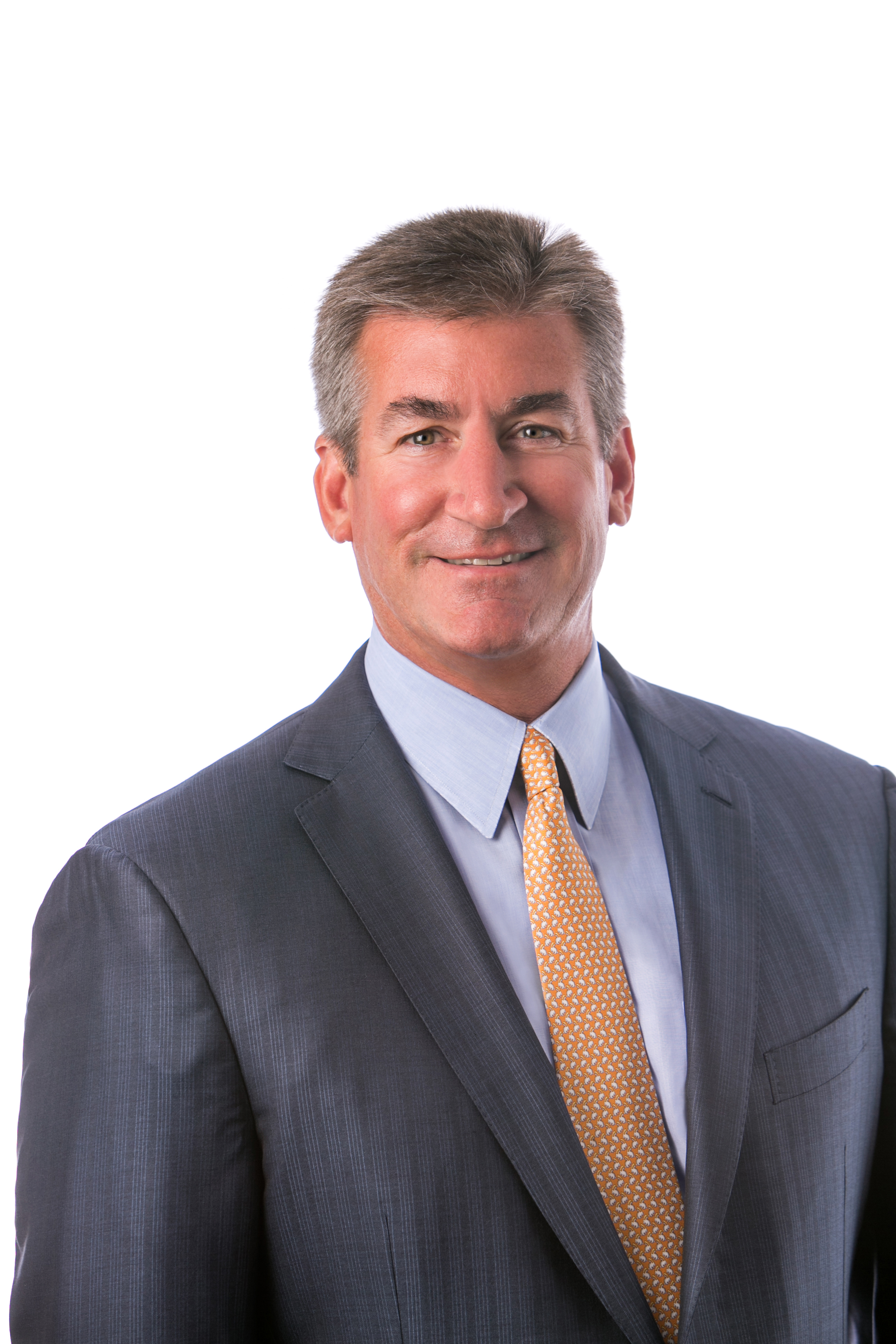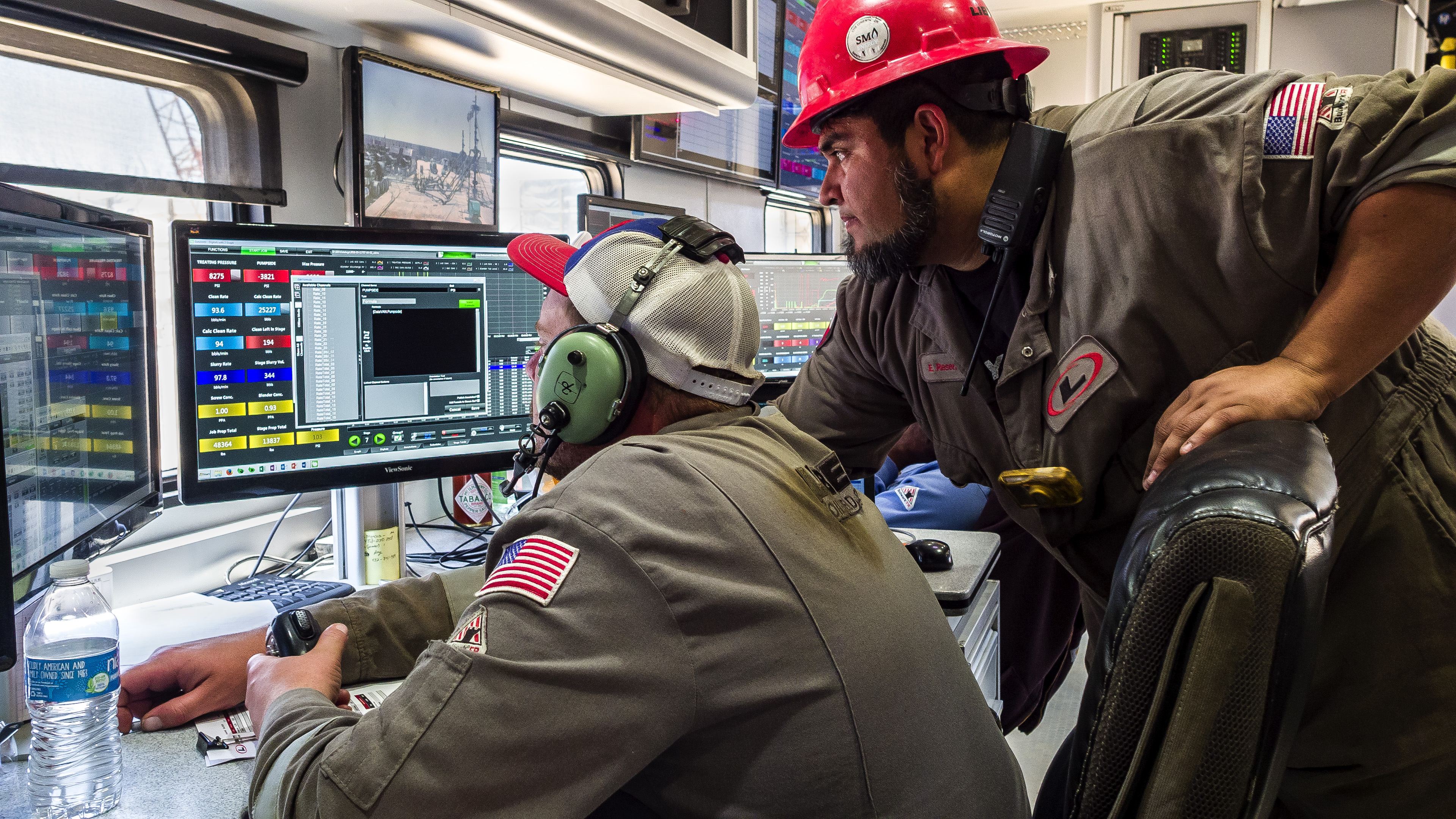
Solaris Oilfield Infrastructure Inc. silos of proppant at a multilwell pad in the Permian Basin. (Source: Solaris Oilfield Infrastructure Inc.)
[Editor's note: A version of this story appears in the June 2020 edition of Oil and Gas Investor. Subscribe to the magazine here. It was originally published June 1, 2020.]
Check in on oilfield service firms’ (OFS) outlooks in mid-April, they said. It’ll be fine, they said.
And it was, when talking to an OFS executive who once drank the frac fluid, one who handles produced water and one who delivers sand.
A bonus: some virtual birding as each was working from home. In Denver and on the Texas coast, springtime courtship serenades were well underway.
April frac starts in the U.S. were some 300—“the largest monthly [percent] drop in fracking activity ever recorded in the U.S.,” reported research firm Rystad Energy near month-end. The February count was 807, falling in March to 550.
Of the April jobs, two-thirds were in the Permian and the other 100 were split between the Bakken and Eagle Ford. The U.S. land rig count was 512, according to Baker Hughes Co., with more than half of those drilling in the Permian.
“Offshore is deteriorating faster than it has in previous cycles …,” wrote CapitalOne Securities Inc. analysts.
The Louisiana Oil & Gas Association’s weekly activity report on YouTube was brief: One rig in federal waters, one on the Gulf Coast and 24 drilling for Haynesville gas.
The CapitalOne team said current OFS budget cuts “likely won’t be the only one.” Calling it “Fracpocalypse,” they were nostalgic for the “times in the oil field when the biggest issues were impacts to the lesser prairie chicken.”
J.P. Morgan analyst Sean Meakim titled his summary “We’re Going Down The Big Slide This Time.” Bernstein Research analyst Nicholas Green concluded, “Grab that kitchen sink and throw it. Take the initial commentary to the market and double it.”
Barclays Capital Inc. analyst David Anderson forecasts the other side of the cycle will see that “digital is propelled, de-manned operations are accelerated and E&Ps will consolidate their surviving service providers.”
Balance sheet
Apple stores have a Genius Bar for diagnostics. The oil and gas industry has them too. One of them is Chris Wright, CEO and chairman of Liberty Oilfield Services Inc.
Besides playing a role in the birth of the shale revolution, Wright once made a serving of frac fluid and drank it in a YouTube demonstration of its benign ingredients.
One evening in early April, he had to write to Liberty’s approximately 2,500 current and newly former employees. Half had been laid off during the day. He described the company’s plan going forward. More than a dozen who had been laid off that day wrote back immediately.
“They were hoping I was okay,” Wright said. “They were pulling for Liberty and couldn’t wait to come back some day. They had just lost their job—and at the worst possible time—and they’re emailing me, hoping I’m okay.”
Founded in 2011, Liberty entered the 2015 to 2016 downcycle with 600 employees and exited with 600.
“I had never laid off anyone in my life,” Wright said. “But this one is really different. The incredible pace of the collapse for our products—oil and gas—it’s just a very different time.”
He expects Liberty to grow through this cycle, though. “It’s not only our goal; it’s our mission as this thing rebounds to grow the business back up and bring everyone back,” he said.
Liberty’s balance sheet at year-end was $113 million of cash on hand—about $1 per share—and total debt of $106 million in term loans maturing in the second half of 2022. Its credit facility—$283 million at the time—was undrawn. That wasn’t by chance.
“This industry is crazy,” Wright said. “You don’t get a long warning before a downturn. You have to have a strong balance sheet. The next few quarters are going to be dreadful, but we’re going to get through this.”
For how long should it be prepared? Six quarters? Three years? “I definitely think a good while. We’ve never seen demand destruction like this. The financial crisis [of 2008 to 2009] was not even close. Even the Great Depression was not even close,” Wright said.
The estimated demand destruction is 25%, which is about 25 MMbbl. “That’s a big hole to dig out of,” he said. “It’s going to create so many things we can’t predict.”
Among these, governments funded by oil exports are going to collapse, Wright expects. “There will be a lot of supply disruption. I think it’s 18 to 24 months before we feel fully on the other side,” he said.
The other side will look remarkably different from the oil industry of the past, he added. “When the dust settles, a large number of companies on both the E&P side and service side will be gone.
“Sadly, there will be a huge number of bankruptcies. There will be a huge number of mergers,” he said.
The pressure pumping business will be smaller. CapitalOne Securities estimates that the remaining providers will be Halliburton Co., Nextier Oilfield Solutions Inc., ProFrac Services LLC, ProPetro Holding Corp. and Liberty “as cash can’t keep being injected into the business,” the analysts said.
Revolutionary change
Wright was part of the early shale fracturing industry. His frac diagnostics business, Pinnacle Technologies Inc., was on the Union Pacific Resources job in 1995 when it determined that just using slick water when fracturing tight rock—at the time, the Cotton Valley in East Texas—worked better than gel.
Wells were more productive, and they were less expensive.
Pinnacle Technologies was also involved when George Mitchell first tried it on the Barnett Shale. The shale gas revolution was born. Recipes developed in its ongoing trials were adopted in trials of fractured horizontals in the Bakken in eastern Montana and in North Dakota, spurring the tight oil revolution.
Wright would do it all again, of course. “I’m incredibly proud of what the shale industry has done for this country and for all the citizens of the world—particularly low-income citizens.
“We save over $1 trillion per year for consumers. For low-income people, energy is a huge cost. We’ve helped lift literally tens of millions of people out of poverty, and we’ve grown life opportunities. So, yeah, I’m thrilled it happened,” he said.
Sure, free markets naturally seek the outer limits of demand. “Like any revolutionary change, it causes big disruption, and this did too. Lots of capital was destroyed. Everybody rushed to put money in, started companies, too many poor businesses.
“That made the business very challenged. Our industry has had a bad decade of return on capital, and investors are tired of us,” Wright said.
Liberty’s stock price was $3.34 in late April, after the May contract for WTI delivered to Cushing fell to negative $40 on paper as it was being settled. It had IPOed in January 2018 at $17. Its all-time high was $23. Its dividend had been a nickel per share, quarterly; it was suspended in April.
Tudor, Pickering, Holt & Co. (TPH) analysts wrote after the Liberty cost-cutting news that it was “better positioned than
most pumpers.” The analyst said the cuts “struck us as some of the more laudable cuts across the OFS space” although “painful and unfortunate.”
Manned crews fell from 24 to 12. They expected Liberty would “toe the line on” free cash flow.
“Couple that with their net cash position, top-notch management team and undeniable execution prowess, and we believe Liberty’s equity will survive this squall,” the analysts said.
CapitalOne Securities’ Luke Lemoine wrote that Liberty was “directionally positive.” In addition to layoffs, it reduced officer compensation by 66%, including cutting salaries 30% and board member retainers 30%. Net, “We’re still modeling Liberty generating $20 million to $30 million of annual free cash flow in this environment,” Lemoine added.
Growing market share
Liberty’s success has derived from the company being “the preferred provider for our customers,” Wright said.
“In the past two years, we have been growing our market share with the largest E&Ps,” he continued. “The pie is shrinking now, but we’re growing our piece of that pie because I think we do a better job than our competitors.”

Liberty also has been selective of its customers. “I think they will be consolidators. They are going to do much better than the average E&Ps in this downturn,” he said. Wright also points to the Liberty team as a source of strength. “They’re strong, resonant folks. They love their jobs and that’s everything,” he added.
Later in April, Wright hosted a town hall teleconference. Among employees joining were crew members at a frac site on pause between stages. (They were off duty at the time.) The customer had announced that morning that it was shutting down completions across North America.
“And these members of the crew were on the call.” Wright asked them spontaneously from the more than 300 individuals on the video call, unaware which crew they were on. The crew said, ‘We know we’re going to be furloughed, but it’s not impacting our love of Liberty. We are Liberty Strong, and we’ll be ready to go back to work.’”
Wright said, “People view Liberty as a career and not a job.” Some 96% of employees participate in the company’s 401k program.
“All the guys and gals on our locations have a long-term mentality,” he said. “And in several months, they’ll be back at it. It will be months away, but they will be there. That’s a huge asset. They saw how Liberty handled the last downturn.”
Meanwhile, Wright said, “The next nine months for the frac industry are really going to be awful.”
All cash, no debt
Over at Solaris Oilfield Infrastructure Inc., the team was holding up well. “We haven’t heard anyone break a window during a video conference, so I think everyone is as sane as could be right now,” said Bill Zartler, founder, chairman and CEO.

Cowen & Co. LLC analyst Marc Bianchi had proppant-delivery firm Solaris on its short list of favored small-cap OFS stocks. TPH analysts expected “completions activity to fall off a cliff, but Solaris will survive the fall.” The balance sheet has $46 million in net cash and, they added, it is a preferred last-mile offering and has limited capex needs.
TPH reported, “They’re one of the best-positioned U.S. onshore completions-oriented OFS equities in our space, and we expect them to leverage all the arrows in their quiver to survive this brutal oil market blitzkrieg.”
Zartler said, “We’ve set our balance sheet up really conservatively. We have cash on the balance sheet north of $1 per share, no debt, a very scalable model, pretty low corporate overhead for a public company and … we really view our field guys as our front line. They are the key to customer relations and make sure everything works for our customers.”
The layoffs there have been difficult as well. “It’s tough to see them go as the market has fallen,” he said. “It’s a pretty dramatic reduction in completion activity.”
Kyle Ramachandran, Solaris president and CFO, said, besides a strong balance sheet, “our team is pretty diverse.” This includes a sizable software team, an R&D team and a team that leads business development, capital-raising and investor relations. “It’s unique for a company our size. We kind of see this as an opportunity,” he said.
He and Zartler noted this isn’t Solaris’ first downturn. It was founded in 2014 and IPOed in May 2017. Ramachandran said, “Starting in 2014, leading into 2015, was not a great time. But we were slow and methodical, focused on building the business.”
In this one—again with a strong balance sheet—Solaris is on the offensive. Ramachandran said, “We’re very sad to make cuts we need to make on the operating side, but we are making investments for what this looks like in a turnaround in a brighter future.”
Fleet optimization
Solaris entered 2020 with about one-third of the market for its core business—storing, managing and delivering proppant to the frac site. “We think there is opportunity to grow that share as well as consolidate other offerings during the downturn,” Ramachandran said.
It is also upgrading its fleet. “We view this as an opportunity to really evaluate our system,” Zartler said.
Much of its fleet has been in the field nonstop. Bringing some back into the yard, Solaris is giving them an Oz treatment, making them shiny again but optimizing them as well “to make them better when they go back out,” Ramachandran said. That will be during the next six to 18 months. A “more normalized version” of the industry will begin to emerge six months after onset, he estimates.

“I don’t think it’s going to happen much sooner than that. But, as it happens, we want to be prepared with the same kind of service and quality reputation,” he said.

Meanwhile, Solaris continues to work in earnest on R&D. “We launched [Solaris] when it was a bad time to start an oilfield service company,” Zartler said. “But we were spending a lot of time, making sure the offering, the people and the product were ready to take on the challenge.”
At the time, other firms were focused on mending their balance sheets. “We have a strong balance sheet and are focused on offense and making sure our offerings are state of the art,” Zartler said.
These include more automation at the well site. “All of the focus is on making our customer more efficient—things that help them do better,” he said.
The supply chain upstream of Solaris’ offering is the proppant, which the company is delivering and blending. “We’re not in the business of making proppant, selling it or mining it,” Zartler said. “There will be temporary challenges, but the core industry has shown a pretty rapid response now in proppant availability.”
The downturn is not a permanent problem, he emphasized. “It’s a cycle,” he said. Of course, he also noted, “This one is like one that no one has ever seen.”
At Solaris, Zartler said they are “making sure we learn our lessons and get more efficient—that we create something new and don’t lose that edge coming out of this cycle.”
Ramachandran noted that several of the Solaris team members started a water infrastructure firm during the last downcycle. To borrow a quote, he said, “Don’t ever let a good downturn go to waste.”
The rest of former White House chief of staff Rahm Emanuel’s comment, referring to dealing with the 2008 to 2009 financial crisis: “It’s an opportunity to do things that you think you could not do before.”
M&A opportunities
Over at Justin Love’s work-from-home office in the midst of homeschooling, his daughter complained that her business partner—her 6-year-old brother—wanted to sell the lemonade for $4 per serving. Love talked his son down to 50 cents. “You have to price it to your market,” he said.
Love’s plan for water infrastructure firm Blackbuck Resources LLC is to expand. Demand for freshwater and recycled produced water is declining as frac jobs decline. But volume for disposal will grow in the near term.
Formed in 2018 with equity backing of Dallas-based Cresta Fund Management, Blackbuck has no debt. “We feel really good about the market for companies like ours,” Love said. “We are really disciplined in our approach. We contracted with great parties with contract structures that support our continued growth. We see a world of opportunity.”

Love expects Blackbuck’s expansion to be via M&A. “We’re ready to grow. We’ve seen many E&P companies divesting their water assets, and the current market conditions will only accelerate that. Servicing debt will be a top priority for many E&Ps,” he said.
The firm’s commercial development team is “the most sophisticated development team in the business,” he added.
“In fact, we evaluate acreage and upstream modeling with the same depth as E&Ps,” Love said. “We look at it like we’re the oil company and try to find the really good, economic rock. We try to justify the business case for the actual rock.”
Love expects that will result in Blackbuck enduring the cycle. “I think these factors will be a big differentiator for us to grow, and we have the ability to stop and hunker down if we need to versus having to service debt.
“If you’re not servicing debt right now, you’re trying to restructure it, and that’s huge time resources spent,” he said.
In addition, Love said Blackbuck can operate E&P assets if needed: “We’re just extremely creative right now. We want to help E&Ps improve operating expenses and capital efficiency,” he said.
He expects the downturn will last at least 12 months. Blackbuck is wholly focused on the Permian where Love said “It’s going to be tough. We’re prepared for 24 months. But who knows when recovery will start?”
Love added, “I think we all have been awakened to the idea of black-swan events if we hadn’t already. There’s always the potential for conflicts globally or [the virus could] come back in the winter. Anyone planning on fewer than 12 months is probably kidding themselves.”
Reenlisting the workforce
In under two years, Blackbuck carefully built its team—an “A team” that Love calls Blackbuck’s “most valuable resource.”
After 2014, E&Ps and service firms pared to their first string; the current round of layoffs is of many all-stars. How many will return to the industry on the other side of this cycle?
Solaris’ Ramachandran said the human capital side of the business is at risk. But this cycle might be different from 2015 to 2016. In that downturn, there were other jobs workers could go to.
Currently, as the broad U.S. and global economies are in self-imposed park, maybe “It could mean people stay in the oil and gas sector,” Ramachandran said. Still, he added, a human capital challenge in the upstream industry will remain.
Ramachandran joined the industry in this century. Use and development of technology in the business will continue to drive excitement about getting into it. “So there is opportunity to pick up talent,” Ramachandran commented.
But the field personnel—the laborers—might not be keen. “They are looking at the need for a steady income. In some ways, the shale revolution has increased the frequency but shortened the duration of volatility.”
The ups and downs aren’t for everyone. “This business has had more short-term cycles,” he said. “But the massive demand-driven challenge has raised hairs on the necks of even the most experienced folks.”
At Liberty, Wright expects many workers won’t return to the industry. There will also be fewer jobs. “One of the great things—but one of the tough things—about this shale revolution is the incredible change in efficiency,” he said.
In 2008, before U.S. gas supply overwhelmed what demand existed at the time, there were 1,600 gas-directed rigs at work.
“We were the largest natural gas importer in the world, and we had 1,600 rigs drilling for gas. Today we have fewer than 100, and we’re the third largest LNG exporter in the world. That’s awesome for price and efficiency, but it means fewer employees,” Wright said, explaining that the 2015 to 2016 downturn was “another step toward a leaner industry. Maybe this is another one.”
With Liberty’s plan to increase market share, it expects to be back at 2,500 employees two years from now. Wright said, “We will do far more work, far more stages, more sand than fourth-quarter 2019, and we probably have a much larger market share.”
However, he added, “Market share isn’t the goal unto itself. We want to be the best provider, and that results in a growing demand for what we do.”
SIDEBAR:
MORE OFS
In addition to the Big Three—Schlumberger Ltd., Halliburton Co. and Baker Hughes Co.—here are a few more of the several OFS names getting love.
Cactus Inc. (WHD): Raymond James & Associates Inc. analyst Praveen Narra wrote that, despite the downturn, Cactus “should be a free-cash-flow generator over the next two years, further bolstering its net cash position.” He reiterated his Strong Buy and raised the target from $15 to $22. Its net cash position was $200 million with zero debt, and Narra expected it to exit 2020 with $300 million and zero debt.
“In our opinion, Cactus is one of the most defensive names on the small-cap side for U.S. oilfield services,” Narra said. With the stock undervalued, “We view the name as a take-private candidate,” he said.
Cactus IPOed in February 2018.
Helmerich & Payne Inc. (HP): The land rig operator has $355 million of cash and net debt of $124 million. “There’s also an undrawn $750-million credit facility that matures in 2024,” wrote CapitalOne Securities Inc. analyst Luke Lemoine. Its outstanding bonds—about $480 million—are due 2025.
H&P cut its second-quarter dividend from 71 cents (about $300 million per year) to 25 cents (about $100 million per year). That “would allow HP to keep building cash in a tough operating environment,” Lemoine said.
Tudor, Pickering, Holt & Co. (TPH) analysts wrote that the remaining dividend is both attractive and sustainable at “roughly 6% current annual dividend yield, but more importantly [it] ensures that its balance sheet will remain in strong position even as contract coverage wanes in coming years.”
They added, “We have zero survivability concerns here.”
Patterson-UTI Energy Inc. (PTEN): Exiting 2019, Patterson-UTI had $174 million of cash, an undrawn $600-million bank facility with a 2024 maturity, $525 million of 2028 notes and $350 million of 2029 notes, Lemoine said.
“In today’s stressed scenario, we’re modeling normalized free cash flow of some $130 million, which would be sufficient to meet all debt maturities through 2029,” he said.
Trican Well Service Ltd. (TOLWF; TCW.TO): “Despite a menacing outlook, we’ve no survivability concerns here,” TPH reported. Cost cuts and a 2020 capital budget for only maintenance means “Trican is following the right playbook.”
Fourth-quarter 2019 net debt to capitalization was about 5%, offering “more than enough flexibility to ride out the forthcoming storm,” TPH said.
Recommended Reading
Energy Transfer Eyes Draft Environmental Statement for Blue Marlin Project This Quarter
2024-05-09 - Energy Transfer is among several firms vying to build deepwater ports along the Texas Gulf Coast.
TMX Crude Quality May Hamper Flows from Canada to US West Coast
2024-06-12 - Companies and industry associations including Canadian Natural Resources Ltd, Chevron and refiner Valero Energy have written to the Canada Energy Regulator (CER) to complain about high vapor pressure limits on the Trans Mountain pipeline.
ONEOK to Build New Pipeline, Expand Capacity from Kansas to Denver
2024-07-18 - ONEOK plans to build a 230-mile refined products line from western Kansas to the Denver International Airport as part of a $480 million network upgrade.
Permian Takeaways: Rebuilding the Most Prolific Paradigm in the US
2024-06-03 - Midstream companies and E&Ps may have different priorities, but continued pipeline development is crucial for the basin’s future.
West Texas Hold ’Em: Permian Plays Pipeline Poker
2024-07-16 - The consensus is that the Permian Basin needs another major gas pipeline soon. Midstream companies are trying to figure out when … and who will make the move.




